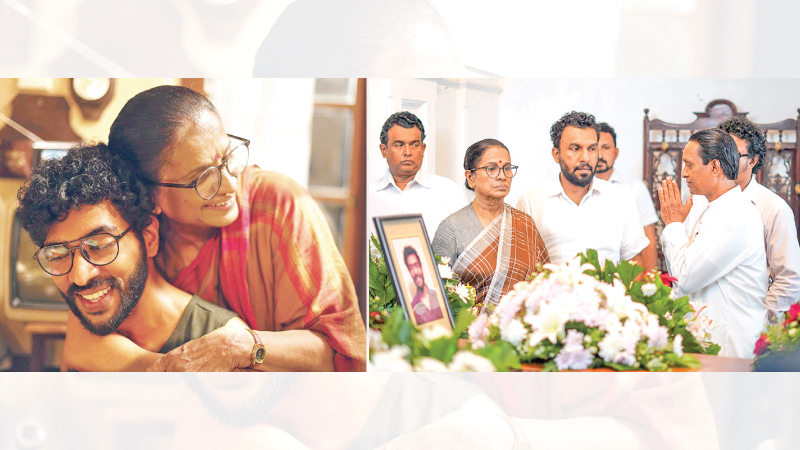The film “Rani” by Asoka Handagama based on the character of Dr. Manorani Saravanamuththu, a medical doctor and a social activist, was released recently with a major marketing effort. Manorani (1930-2001) was a key activist within the Mother’s Front Movement (1990-94), consisting of mainly Sinhala mothers demanding justice for the forcible disappearance of their sons (mainly by State forces). She was the mother of Richard de Soysa, playwright, actor, and journalist, who was abducted and murdered by State forces in February, 1990.
The film depicts the life journey of a professional upper-class woman, who struggles for justice, amidst an escalation of state violence under the ruling UNP Government. The story is framed within a specific period, from February 1990, when Richard was abducted, to May 1993, when President Ranasinghe Premadasa, along with the Senior Police Superintendent, Ronnie Gunasinghe, identified by Rani as one of the abductors of her son, were killed by an LTTE suicide bomber. The film ends with Manorani spending the final years of life in an elderly care facility.
Even as a fiction (based on real events), when real events are appropriated and framed in a particular way it is important to consider how aesthetic cultures contribute or detract from strengthening struggles towards democracy as well as justice.
Manorani was thrust into political activism as a consequence of state violence. The launch of death squads and torture chambers under then President Premadasa (1988-93) is a key theme in this movie. The UNP government (1977-1994), introduced an authoritarian Presidential system in 1978, along with a brutal Prevention of Terrorism Act (1982), which gave the police and military unprecedented powers enabling torture, disappearances and assassinations.
Richard was abducted and murdered by a death squad, but the death squad itself is portrayed as relatively independent from command and control from above.
A scene at the end of the film portrays a conversation among death squad members while travelling in a jeep, deciding to abduct Richard. Drunk and in a cheerful mood, this group of killers assert their heterosexual masculinity with homophobic comments, implying the reason for the abduction was to harass a journalist who is also gay. While this sort of “rouge” death squad is a possibility, the film absolves key actors within the then ruling UNP of any responsibility and accountability for these death squads. The storyline of the film reinforces the culture of impunity that prevailed within the Security Forces.
While the central character in the film is Manorani, an upper middle-class English-speaking professional woman, the depiction of her son’s sexuality, as a homosexual man, is framed within a homophobic gaze merged with homoerotic violence. The scene conveying Manorani’s tolerance but uncomfortability with Richard’s homosexuality taps into a common homophobic cultural code.
Although the English-speaking upper classes tends to be less homophobic, the film’s homophobic gaze integrates sexual violence. After accidently, interrupting a moment of affection between Richard and his male friend, Manorani’s character later asks “you didn’t rape him, did you?” and Richard responds, “he’s not my type”.
In a context where homosexuality is criminalised, this homophobic narrative seems to justify State violence. In effect, the film ends up normalising this sadistic culture of homophobic sexual violence, particularly within police and military cultures, portrayed by the death squad in the film.
The patriarchal gaze in this movie, represents Manorani as a smoking, alcohol drinking, independent middle-class woman, particularly in the early parts of the film. In her conversations and interactions with characters around her, her professional identity is downplayed and her Tamil ethnicity unexamined.
To be continued…
– Janaka Biyanwila is the author of Debt Crisis and Popular Social Protest in Sri Lanka: Citizenship, Development and Democracy Within Global North-South Dynamics, (2003) Emerald: London.




